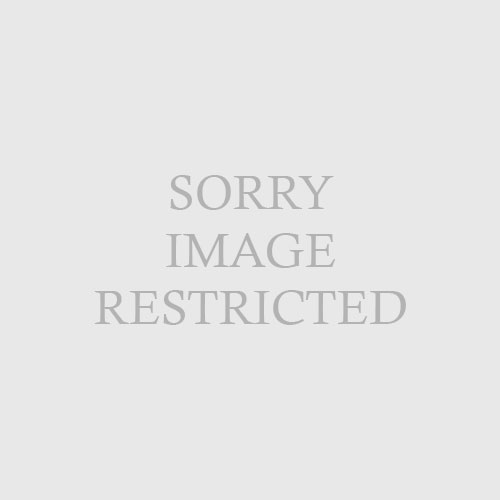General DermatologyACNE AND RELATED CONDITIONS
ACNE VULGARIS AND SPECIAL FORMS (Tables 3-1, 3-2)
Acne Vulgaris- Inflammation of the pilosebaceous unit (PSU) causing comedones, papulopustules and nodules
- Four key pathogenic factors
- Abnormal follicular keratinization
- ↑ Corneocyte cohesiveness and proliferation
- Propionibacterium acnes (P. acnes) in sebum
- Gram + anaerobic rod, resident flora in follicle but acne patients with higher concentration
- Naturally produces porphyrins (coproporphyrin III), which is the target of light-based acne therapy
- Secretes lipases which cleave lipids in sebum into pro-inflammatory free fatty acids (FFAs), which are both comedogenic and chemotactic
- Binds/activate toll-like receptor 2 (TLR2)
- Inflammation
- ↑ IL-1, IL-8, and TNF-α through TLR-2 pathway
- Hormonal effect on sebum due to androgens
- ↑ Sebum production due to androgen-stimulated sebaceous glands
- Androgen receptors present on basal layer of sebaceous gland and ORS of hair follicle; respond to most potent androgen, dihydrotestosterone (DHT), and testosterone (latter produced by gonads and can be converted to DHT via 5α -reductase)
- Dehydroepiandrosterone sulfate (DHEA-S): weak androgen produced by adrenal glands
- Microscopic precursor lesion: microcomedo
- May present with non-inflammatory comedones (open/closed), inflammatory papules, pustules, ± nodules
- Histology: follicular distension often with ruptured PSU and accompanying brisk inflammatory response, ± foreign body reaction with multinucleated giant cells
- Treatment:
| | | | | | | | Topical therapy | | Benzoyl peroxide, retinoids (tretinoin, adapalene, tazarotene), azelaic acid, dapsone, clindamycin, sodium sulfacetamide/sulfur and salicyclic acid | | | | | Topical retinoids: comedolytic and downregulate TLR-2 | | | | | | | | | |
| | | Other therapies | | Oral antibiotic, isotretinoin, oral contraceptive pill; photodynamic therapy or blue light alone | | | | | Cannot combine isotretinoin and tetracycline due to risk of pseudotumor cerebri | | | | | | | | | |
|
| | | | | |
|
| | Figure 3.1
A: Acne conglobata
B: Acne excoriée
C: Acne in PCOS |
|
| | | | | | | Table 3-1 Acne Variants | | Type | | Clinical Features | | | Acne fulminans | | – Severe form of nodulocystic acne in young males (13–16 years old)
– Presents with sudden-onset suppurative nodular acne with ulceration, eschars and systemic symptoms (may include myalgias, arthralgias, fever, ↑ ESR, ↑ WBCs, ± sterile osteolytic bone lesions typically over clavicle or sternum)
– Treat with low-dose accutane and prednisone or prednisone alone initially, followed by isotretinoin (to prevent flare and formation of granulation tissue) | | | Acne conglobata
(Figures 3.1A, 3.2A) | | – Acute-onset nodulocystic acne without systemic manifestations
– Part of the follicular occlusion triad (dissecting cellulitis of scalp, pilonidal cyst and hidradenitis suppurativa) | | | Acne excoriée
(Figure 3.1B) | | – Mainly seen in young women with emotional or psychological disorders (such as obsessivecompulsive disorder) who repeatedly pick at lesions
– Presents as mild acne with several excoriations, crusted erosions and sometimes ulcerations with subsequent scarring
– Antidepressants may be warranted | | | Acne with underlying
endocrinologic abnormality
(Figure 3.1C) | | – If acne with accompanying hirsutism ± irregular menses, check lab work for hormonal abnormality (check LH, FSH, DHEA-S, free and total testosterone) – Source of androgens Ovarian androgens: testosterone
Adrenal androgens: DHEA-S, 17-hydroxyprogesterone Polycystic ovarian syndrome (PCOS): – Seen in 5–10% of women of reproductive age – Androgen excess causing hirsutism, irregular menses, ± polycystic ovaries, obesity, insulin resistance, ↑ LH/FSH ratio, ↓ fertility, ↑ testosterone – Acne lesions typically nodular and involve lower ½ of face (especially jawline) – Treatment: oral contraceptive pill (resulting in ↑ SHBG, ↓ free testosterone), spironolactone (off-label, blocks androgen receptor) Late congenital adrenal hyperplasia: – ↑ DHEA-S or 17-hydroxyprogesterone due to partial deficiency of adrenal enzymes (commonly 21-hydroxylase or 11-hydroxylase) | | | Industrial acne | | – Due to exposure to insoluble cutting oils or chlorinated aromatic hydrocarbons (such as chlorinated dioxins and dibenzofurans)
– Chloracne (form of industrial acne): presents with comedones, pustules and cysts over malar cheeks, retroauricular region, and scrotum | | | Acne mechanica | | – Due to repeated obstruction of the pilosebaceous unit through friction/pressure | | | Neonatal acne (Cephalic
neonatal pustulosis) | | – Begins around 2 weeks of age and often resolves by third month of age
– Presents with erythematous small papules on cheeks | | | Infantile acne | | – Typically begins around 3–6 months of age, resolves within 1–2 years | | | Drug-induced acne
(Acneiform eruption) | | – Due to corticosteroid, phenytoin, lithium, isoniazid, iodides, epidermal growth factor receptor inhibitors (EGFRI: cetuximab, erlotinib, gefitinib), anabolic steroids
– Presents with abrupt-onset monomorphic-appearing papules and pustules; comedones typically not seen | | | | | |
| | | | | |
|
| | | | | | | Table 3-2 Syndromes Associated with Acne | | | Syndrome | | Clinical Features | | | PAPA syndrome | | Pyogenic Arthritis (sterile), Pyoderma gangrenosum, Acne
– Inherited (AD), CD2 binding protein 1 (CD2BP1) mutation; CD2BP1 is a pyrininteracting protein, which is part of inflammatory pathway associated with familial Mediterranean fever, Muckle-Wells syndrome, and familial cold urticaria
– Skin changes typically present near or at puberty | | | HAIR-AN | | Hyper Androgenism, Insulin Resistance, Acanthosis Nigricans | | | SAPHO
(Chronic recurrent multifocalosteomyelitis) | | Synovitis, Acne (conglobata), Pustulosis (palmoplantar), Hyperostosis, Osteitis
– Inflammatory bone changes (commonly involving sternoclavicular joint, spine {spondyloarthropathy} and long bones); peripheral arthritis also common
– 1 st line treatment: bisphosphonates suggested in many case reports and series; other treatments include mainstay therapies for psoriatic arthritis (methotrexate, anti-TNF a agents, etc.) | | | | | |
| | | | | |
|
|
